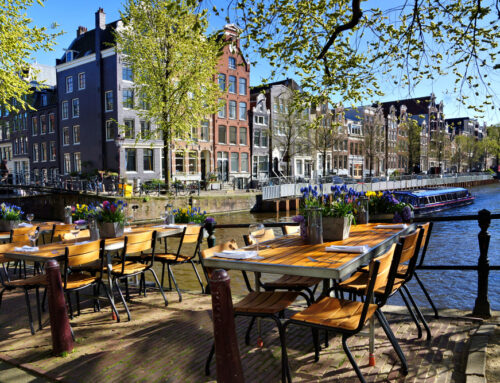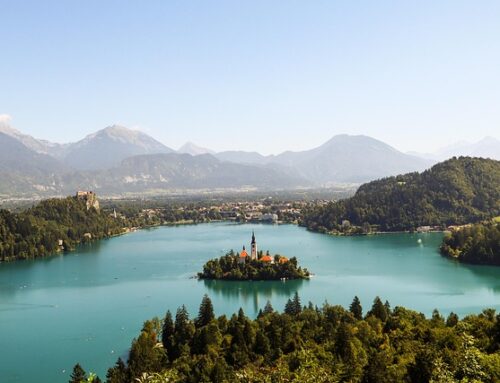7 Reasons Chernobyl Has Become Popular With Tourists
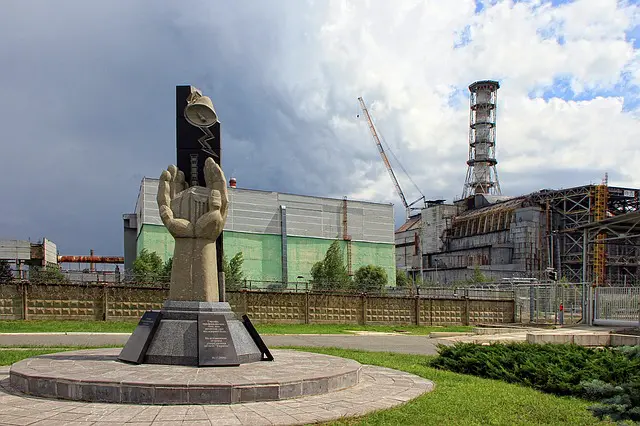
7 Reasons Chernobyl Has Suddenly Become A Hot Spot For Global Tourists

According to The Washington Post, the tourists first began flocking to Chernobyl roughly over 10 years ago, when fans of the 2007 released video game, S.T.A.L.K.E.R, wanted to view firsthand the nuclear wasteland they had visited in virtual reality. Next came those whose curiosity was piqued when in 2016 the New Safe Confinement, a vast metal dome, was slid over the sarcophagus covering Nuclear Reactor No. 4, which exploded in April 1986, forcing hundreds of thousands to flee from their homes as radiation spread across Europe.
In 2019, WikiTravel reported that about 150,000 tourists came to the area. Soon after, the Ukrainian government–capitalizing on the macabre interest announced that Chernobyl was officially declared an official tourist site, complete with waterways, routes, a “green corridor,” and checkpoints that will set it on the map with other “dark tourism” destinations, a trend where visitors travel sites marked by suffering and death. Read on to understand why the site of the world’s worst nuclear catastrophe instantly became a global hot spot for tourists.
It’s Flocking with Tourists Thanks to the HBO Show
To the surprise of possibly no one inhabiting the digital age, the runaway success of HBO’s fizve-part miniseries, “Chernobyl”–with an epic six million viewers who tuned into the finale–has sparked a surge site and attracting curious travelers to this swath of irradiated ghost town. A mix of fictional accounts and real events, the miniseries depicts the silence from Soviet officials at that time who were unwilling to recognize that the disaster had occurred reminded a few of the wobbling trust they have in their own government to tell them the truth.
Since its debut in May 2019, the company tours to Chernobyl, as covered in the Sea Mashable article, have seen a 40 percent spike in bookings and reservations and were anticipated to grow in the coming months. There’s also seemingly a plan for a similar show from the Russian network NTV that will narrate what it claims to be the “true” version of the catastrophe, including U.S. spies that the country recommends were responsible for the explosion.
The Exclusion Zone is Now Safe to Visit
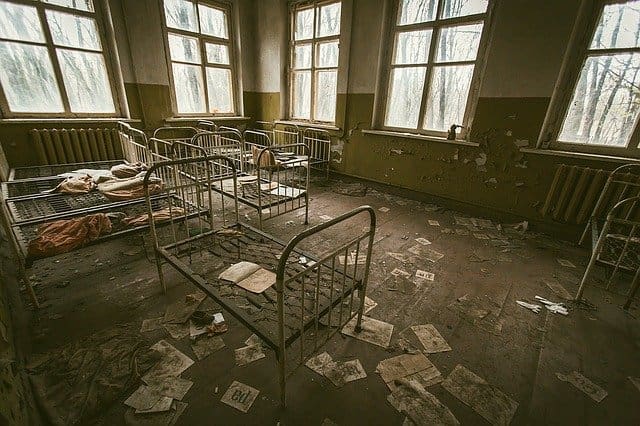
The increasing number of tourists in Chernobyl could have been due to the claims that the site is now safe to visit. The ruins of the Nuclear Reactor, now encased with a steel shell, are still highly radioactive and will likely continue that way for up to 20,000 years, as explained in Live Science. “However, radioactivity can be considered mostly safe in small doses (like when you take a long-haul flight or when you get an x-ray), and an average one-day visit to the zone means that visitors are only exposed to low levels of radiation for just a few hours,” says Thrifty Nomads.
Nevertheless, ongoing radiation safety concerns mandate that travelers are not permitted to wander on their own and are restricted to certain areas. Visitors may not touch any plants or structures or take anything from the zone, and they are forbidden from placing any equipment or sitting on the ground. On the way out of the exclusion zone, everyone is required to pass through an old soviet radiation checkpoint for radiation measurement or dosimetry control. Regardless of the trip you take, it is always necessary to have travel insurance in case of an emergency.
Nature is Thriving in Chernobyl
My Modern Net featured in their article that researchers from the UK announced information sharing that there are possibly more animals present in the exclusion zone now than prior to the tragedy. In fact, deer, elk, wolves, fox, and many more species roam the land, taking advantage of human absence to securely plant their roots. Rare species like the European lynx and Przewalski’s horse, which were believed to have vanished from the site, were spotted within the Exclusion Zone.
Because of this, visitors seeking to experience nature will be glad to know that eco-tours has now opened Europe’s largest private reserve organization, APB-Birdlife Belarus. Travelers are guided through the Palieski state radioecological reserve, which is the name for the Exclusion Zone’s Belarus side, to experience this “accidental wildlife sanctuary.” Today, the country’s largest wildlife conservation is home to about 70% of Europe’s bird species along with an abundance of bears, boar, and wolves. Another good news is that the organization reinvests all profits back into the local reserve, so participants can ease their minds knowing that they are not only getting the experience of a lifetime but also giving back.
Interesting Stories about the Self-Settlers or “Samosely”
Self-settlers, also known as ‘samosely’, are residents from the Exclusion Zone who had refused to abandon their homes after the meltdown more than 30 years ago and are still on the site. During his tour of Chernobyl, Adam McGhee of Atlas Obscura met Ivan Ivanich, a 90-year-old settler who is a ‘proud fascist’ and quote ‘will talk your ear off even if you don’t understand his raspy Ukrainian.’ Ivan lives with his wife and has two sons, but left their children in Kyiv where they can be safe, while they stayed in the zone permanently. Interestingly, during McGhee’s stay with two of the self-settlers, he learned something about the settlers’ survival story prior to the calamity.
The Ivaniches often spend their night in many neighboring abandoned homes when domestic tension escalates. The couple plant and eat their own crops, drink from a well just outside their home, and hunt the local critters. Ivan shared his disappointment with the Ukrainian government for the lack of adequate health care.
To cultivate sustenance, the settlers generally work in barren fields for months since a bag of potatoes costs a few dollars in Kyiv. The samosely’s potato-dominant diet is supplemented with the occasional unmarked liter of unfamiliar liquor and wild mushrooms, presented when inquisitive visitors drop by.
Most of these settlers are residing within the first few feet of the 100-yard danger zone, so at their age, any effects will be less.
Buildings Are Left Frozen in Time
Going to Chernobyl offers a chance for travelers around the world to visit noteworthy buildings such as the reactor hall and the imposing nuclear control which helps the visitors to delve deeper into the unfolding events that took place in April 1986 and the story of the people from the town of Pripyat.
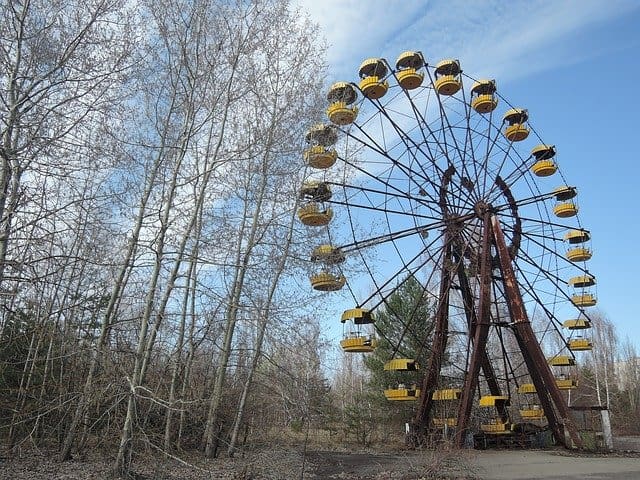
Peeling paint, broken windows, and crumbling plaster, Zalesye is an old farming village where visitors can wander with their tour guides among empty houses. A former traveler from National Geographic shared witnessing gas masks left on the ground and trees as well as dolls scattered half-dressed in cribs. Pripyat, conversely, is the feel and sound of walking on broken glass. Through the junk-strewn operating rooms and the dilapidated hospital wards with empty cribs and beds. Through the school hallways, traversing mounds of broken-back books. The ruins of the Palace of Culture, picturing it alive with laughter and music, and the small amusement park with its large yellow Ferris wheel. Building after building, all are decaying but exhibiting relics of 1986 frozen in time.
Opportunity to Better Understand Chernobyl’s History
Chernobyl tours aim to offer a chance for participants to observe and learn about the area’s rich heritage, and to be enriched with a better understanding of Chernobyl’s history. The chronology of events along with their long-lasting impact will be explained by knowledgeable local guides.
The amusement park, for instance, is among the most affected landmarks in Pripyat, which local residents never had the opportunity to use since it had only just been completed when the nuclear blast occurred. Today, the Ferris Wheel became the iconic image of Chernobyl, as described by Responsible Travel. The informative Chernobyl museum, on the other hand, was built to highlight the scale of the accident and encourage more openness, to ensure such an incident never happens again. Nestled in Kyiv, two hours from the zone, the museum has a film of the evacuation and efforts to protective suits, extinguish the fire, and many artifacts from Pripyat.
It’s Intriguingly Considered as a 20th Century Pompeii
In A.D. 79, an eruption of Mount Vesuvius buried the ancient Roman city of Pompeii under volcanic rock and ash. Today, the UNESCO site is recently the scene of an enthusiastic restoration project. For two seasons–2010 and 2012–Dr. Robert Maxwell, a candidate at the University of Sydney, was reported by National Geographic as the only archeologist who studied the Chernobyl casualty.
Throughout his study, he concluded an analogy comparing Chernobyl as one of those types of sites like Pompeii. Both foretell an account of catastrophic events; one is natural and the other man-made. However, identical in a way how volcanic ashes and radiological particulate in the form of dust masked an entire city. A snapshot of a period in history, both events portray a lesson to be offered to the next generation. They are truly one of the most diagnostic episodes of the 20th century, which has changed the century that this generation is currently living in.
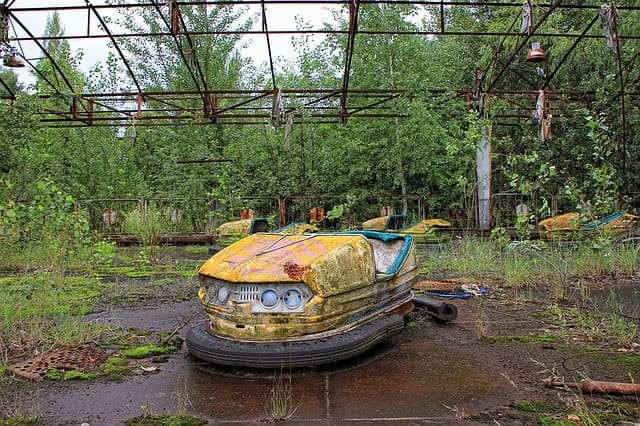
Final Takeaway
Despite the popularity, Chernobyl is still a far-flung city in Ukraine that suffered one of the world’s worst nuclear apocalypse, which doesn’t sound like it would top everyone’s bucket list of places to visit. Then again, Chernobyl has become a tourist hotspot, to the point that it was even the foundation of an HBO miniseries. Still, more than 10, 000 visitors come to the disaster area every year, mostly from Kyiv. But if you’re planning to visit Chernobyl, it’s crucial that you find the right tour for your requirements. While you’re there, be respectful to those who suffered and of your surroundings. Avoiding removing things in their place as a souvenir. Besides the fact, it may be contaminated, it is responsible to leave everything as you find it.



